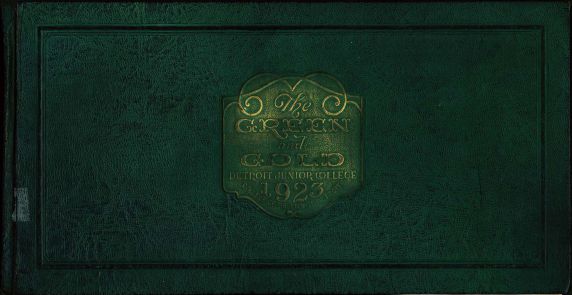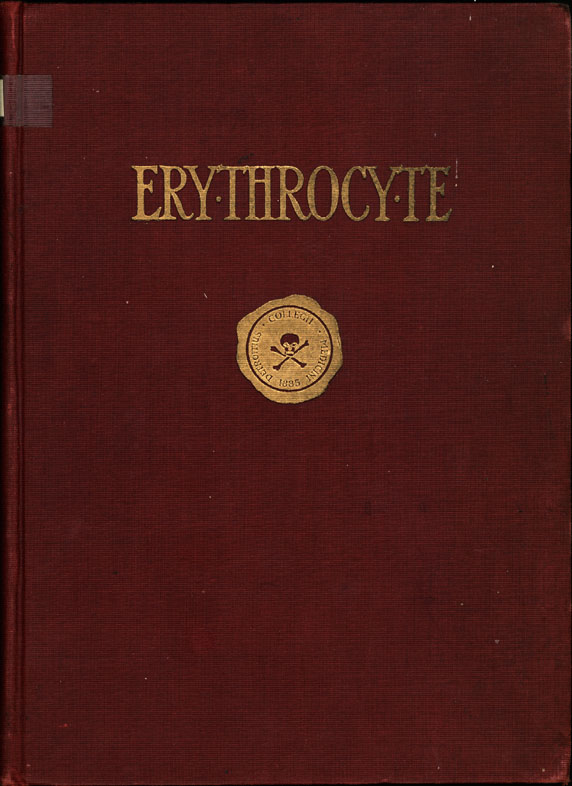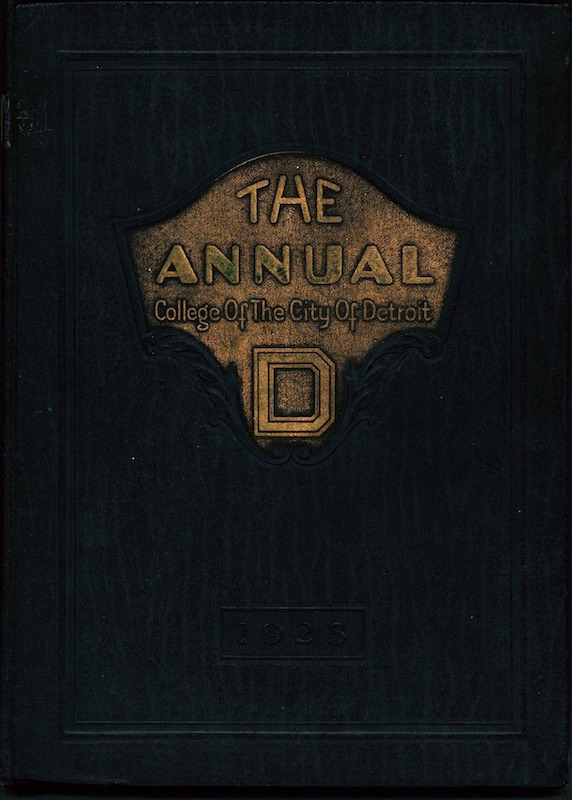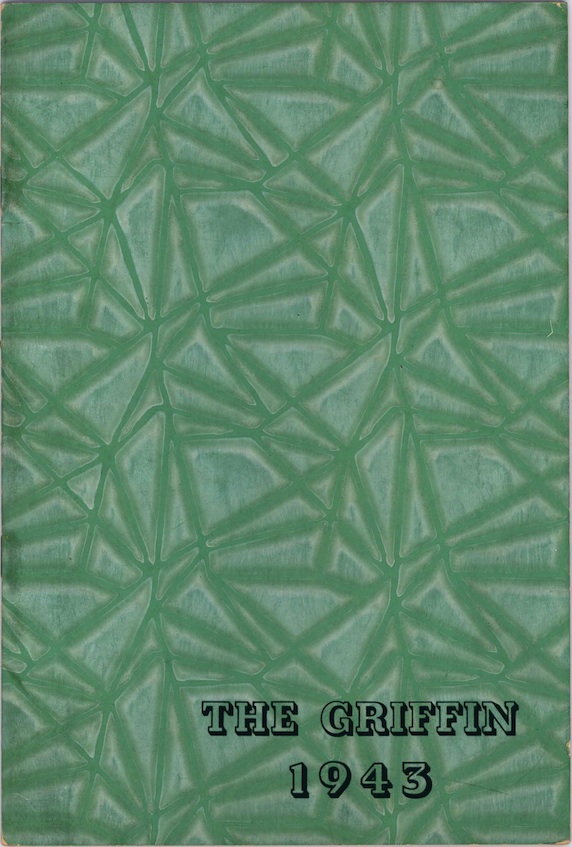Collection Spotlight: Wayne State University Yearbooks
The first college yearbook produced by Wayne State University -- or, to be precise, by the Detroit College of Medicine (DCM) -- appeared in 1900: the Souvenir Annual, prepared by that year's junior class. The last, or latest, Wayne yearbook is 2005's The Warrior. In that 105-year span 131 yearbooks were published by the university, its predecessor institutions, and its departments and colleges. A complete collection of these annual volumes may be found in the Reading Room of the Walter P. Reuther Library.
Despite its title, the 1900 DCM Souvenir Annual did not immediately begin an annual tradition. Erythrocyte, the medical school's second yearbook, did not appear until 1914, and the third installment was published in 1929. Two other Wayne predecessors produced yearbooks in 1923: the Detroit Junior College (DJC) Green and Gold and the Detroit Teachers College (DTC) The Parrot. By 1925, those two schools had merged, and the College of the City of Detroit (CCD) settled on The Griffin as the title of its yearbook, published every year until 1932.
The merging of CCD and DCM in 1933 resulted in Wayne University. A committee of Wayne students produced 19 yearbooks between 1934 and 1955, and the content and extent of these books varied widely. The 1942 yearbook was a 72-page hardbound volume; the 1943 yearbook, reflecting wartime austerity conditions, was a small 24-page pamphlet without photographs; and no yearbook at all was published in 1944. The Griffin then appeared every year in hardcover form until 1956.
In the 1955-1956 school year, when Wayne became Wayne State University, the yearbook had a change of name and format. The 1956 Tartanic was a slim, square-bound paperback book without individual portraits of students. In the 1956-1957 school year the Tartanic was split into three magazine-sized issues, published in the Fall, Winter, and Spring semesters. The first of these issues announced that the "Tartanic" would now be a quarterly publication, but the third ended with an editor's note that read, in part: "Wayne State, the nation's 13th largest university will no longer have a school yearbook... Over the past ten years, Wayne's yearbook has not sold over 600 copies for an average campus population of 10,000. This is appalling. It seems that neither the far-sighted students who seem to be saving their money for the future, nor the near-sighted Budget Committee want a yearbook on campus."
The decline and demise of the yearbook presumably had something to do with the changing demographics of the university. In the twenties and thirties, CCD and Wayne students typically continued directly on to college from their Detroit high schools. After World War II, a Wayne student was more likely to be a part-time student with a full-time job, perhaps a veteran or a parent, taking evening and weekend classes, rather than a four-year campus resident with time for student theater, intramural athletics, and yearbook photo sessions.
By way of contrast, however, some of the graduate and professional schools turned out yearbooks with remarkable consistency. The Wayne University Department of Mortuary Science produced 31 volumes of its own annual yearbook, The Pyramid, between 1949 and 1982. The School of Medicine followed suit in 1962 with an untitled yearbook, published 27 times between 1962 and 1993. The Law School occasionally published special yearbook-formatted issues of student publications (in 1958, 1959, 1967, 1968, and 1969), and a single yearbook issue of the School of Pharmacy's journal Pharmic was assembled in 1981.
The Wayne State University undergraduate yearbook reappeared, in a rudimentary form, in 1974. The untitled yearbook was put together by an outside company, with no input from students, and contained nothing more than the photographs and names of graduates. Through the 1980s, with the eventual addition of a paid student editor under the direction of the Student Center, more information was restored to the books, but it still proved difficult to get students and student organizations to sit for photographs.
The 2005 edition, The Warrior, was the last Wayne State University yearbook. The revived annual book was the victim of the same pressures that had doomed The Griffin in the 1950s, as well as some new digital competition. Wayne was still largely a commuter school with a diverse student population, not the easiest market for a yearbook; at the same time, yearbooks across the country were being supplanted by social media websites such as Friendster (founded in 2002), MySpace (2003), and Facebook (2004).
The yearbooks produced by Wayne and its predecessors have a complex and erratic publication history, but the information that they contain is often fascinating. The 1923 DJC College Green and Gold has an extensive humor section; the 1900 and 1914 DMC volumes include moving tributes to the doctors who founded the medical school; and researchers may find, in the Wayne University yearbooks, photographs of prominent alumni such as Helen Thomas (1942), longtime White House correspondent, and Philip Levine (1950), the current Poet Laureate of the United States.
These yearbook collections are open to visitors to the Reuther Library Reading Room, and we are proceeding with a plan to digitize them and make them available online. You may browse our digital yearbooks, or learn more about our complete yearbook collection by reading its abstract and collection guide before visiting our reading room.
Alison Stankrauff is the Wayne State University Archivist.
- cwesterman's blog
- Login to post comments
- Printer-friendly version





 Reddit
Reddit Facebook
Facebook LinkedIn
LinkedIn